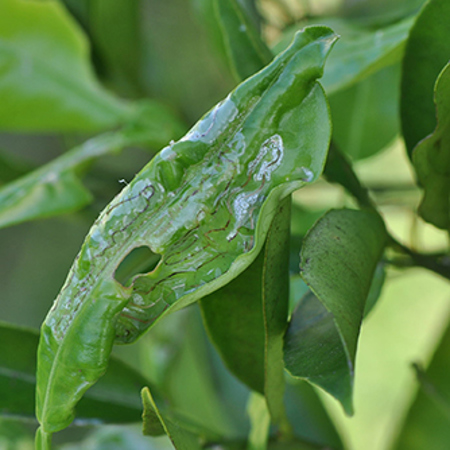Citrus Leafminer
BackCitrus leafminer (Phyllocnistis citrella) is a very common pest on citrus plants. The adult is a small moth (wingspan approximately 5mm) which lays eggs on flushes of new growth. Tiny grubs then hatch and burrow into the leaf. The larvae feed by tunneling their way around leaving tracks or mines (hence their name) all over the leaf. These tracks commonly look like silvery wobbly lines but may also look like a blister on the leaf. Leaves usually become quite distorted and curl up as the larvae start to pupate.
Leafminers are particularly damaging to young small trees and potted citrus. Damage to large established trees is generally regarded as superficial however there is some new research indicating their tunneling can allow diseases to infect plants.
Plants Attacked
All citrus plants are attacked by citrus leafminer including lemons, oranges, limes and the native finger limes. They can also attack other plants in the citrus family (Rutaceae), like murraya, but this isn’t as common.
Organic Control Methods for Citrus Leafminer
There are several options depending on how severe the outbreak is:
- If possible remove affected leaves by hand and place in rubbish bin
- Hang OCP eco-CLM traps to capture males and reduce population levels
- Spray new growth with OCP eco-oil or OCP eco-pyrethrum PLUS ensuring good coverage (top and bottom of leaves). Spray every 5-14 days whenever new growth is present to deter the moth laying fresh eggs.
- Alternatively on ornamental citrus spray new growth with OCP eco-neem. OCP eco-neem will penetrate slightly into the leaf and actually kill the juvenile leafminer providing broader protection. Again apply every 5 to 14 days while new growth is present and ensure good coverage.
NOTE: Female citrus leafminers only lay eggs on early flushes of new growth. Whenever new growth is present employ the above methods to prevent or minimise damage and keep your citrus happy and healthy.



